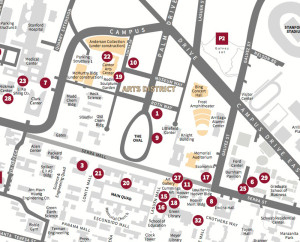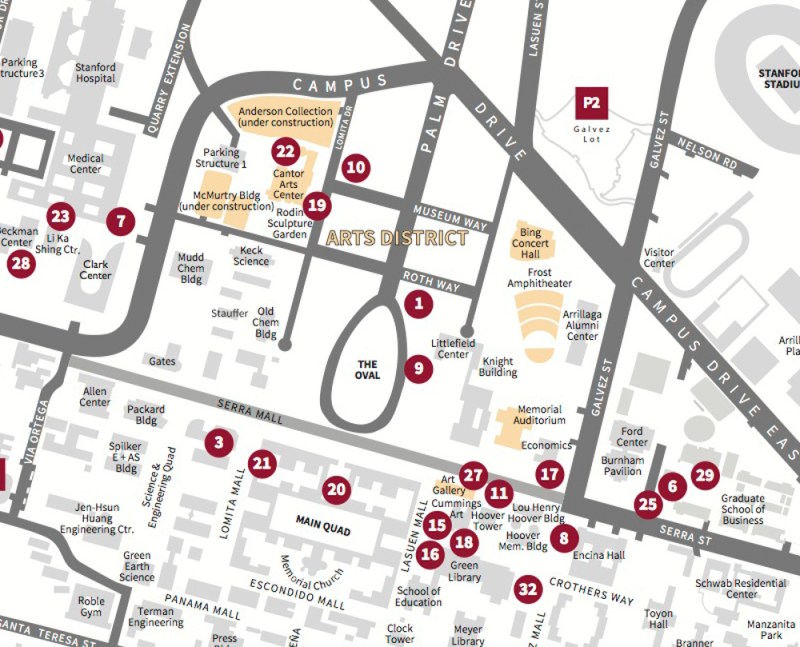Stanford’s ascendancy to the pantheon of higher education is most commonly linked to the University’s prowess in technical disciplines. Less heralded, however, are Stanford’s programs in the arts and humanities, even as the University continues to make great leaps forward in those fields.
Matthew Tiews, executive director of arts programs, explained that Stanford had mounted a concerted push to balance out the University’s offerings and the recognition afforded them.
“All of this is part of, as you say, a real, dedicated push by the University,” Tiews said. “It started with the Stanford Arts Initiative back in 2006, one of the big platforms that the University wanted to address.”

The Stanford Arts Institute serves as an organizational and umbrella group of sorts for many arts and humanities initiatives at Stanford. Stephen Hinton, a professor of music theory and the faculty director of the Stanford Arts Institute, noted that the institute has launched a number of programs throughout its short life to date.
“The arts initiative was one of several initiatives that the University launched at the time, as a part of the Stanford Challenge,” Hinton explained. “The idea was that no one department or school could really take ownership of the initiatives, because the initiative required people coming together from different disciplines.”
Students acknowledged the impact of this effort to increase focus on the arts.
Paula Salazar ’13, the University’s arts in student life coordinator for the University, explained that arts programs have increased in intensity and quantity during her time at Stanford.
“I knew that there were art programs, but I think that in the time since my freshman year, arts programs have definitely exploded on campus,” Salazar said.
She recalled that one of her greatest undergraduate experiences was her participation in Stanford’s Arts Immersion Program in New York during spring break of her sophomore year, a program that is now run by her office.
“When I came back [from the trip], Stanford and the Arts Institute funded the creation of a new arts publication, The Stanford Arts Review – I was one of the cofounders and the original arts editor,” Salazar said.
The University has also invested heavily in interdisciplinary efforts that aim to connect different fields of study with each other and the arts.
“The idea behind the arts initiative was to create interdisciplinary connections between [different] parts of the University,” Hinton said. “Out of the arts initiative, there grew new professorships, new graduate stipends for interdisciplinary students, new programs, immersion trips and this year, we launched the interdisciplinary honors in the arts program.”
Salazar argued that such programs indicate that Stanford is in the middle of an artistic revival.
“That was when I really began to see that Stanford was in the middle of an arts renaissance, and I was able to see where arts at Stanford would be in the years to come,” she said. “A lot of programs that I run right now were started around that time.”
The honors program in the arts is one of the more high-profile new offerings for students interested in the arts. It gives students not specifically studying the arts or the humanities the opportunity to do interdisciplinary work between their own field and the arts.
“The interdisciplinary honors program in the arts allows students irrespective of their major to incorporate the arts into their capstone project,” Hinton explained.
Hinton noted the overlap with other University initiatives, like the introduction of a joint major program that will combine computer sciences with humanities disciplines.
“A lot of what we do is about students who are interested in both – say you are a computer scientist who wants to make a visual arts project using your computer science skills – there are opportunities for you to do that,” Hinton explained. “It doesn’t have to feel like it is a choice to choose one or the other.”
Hinton also emphasized the Spark grants, which are grants specifically for non-academic work.
“[It is] a grant specifically for two students from different areas who want to come together and create a project that will be displayed somewhere on campus,” Hinton said.
Tiews explained that new academic programs will not be the only new arts initiatives at Stanford over the coming years.
“The Anderson Collection, which is going to hold a large variety of paintings, is going to open near the Cantor Arts Center,” he said.
Hinton described the Andersen Collection as arguably the best collection of post-WWII American art, and said that it will be an international draw.
Tiews also singled out the opening of the new arts building in the coming fall.
“In the fall of 2015, we will be opening the McMurtry Building, which will be the new home of the departments of art and art history,” he said. “This means that students making art will be in the same building as those studying it, and they will all be nearby two art galleries on campus.”
Hinton said that the goal of these efforts to boost the arts is part of a long-term goal to make the arts a part of a more holistic and interdisciplinary Stanford student experience.
“Stanford is not just a great place to study X, Y or Z, but it’s a great place to study all of these things, and not necessarily individually,” he said. “We are indeed reforming undergraduate education and the general feel of that seems to be allowing students to do lots of different things.”
Contact Nitish Kulkarni at nitishk2 “at” stanford.edu.
